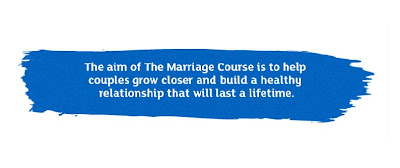
Mrs H. & I really wish that we had done some form of 'Marriage Preparation' before we got hitched in 1996. In our case it wasn't so much that we were deluded love-birds who couldn't imagine ever needing to actually work on our relationship; nor was it the simple arrogance of youth which doesn't look to gain wisdom from those who have walked the road before. With us it was more to do with the fact that we came from different parts of the UK, were studying in Scotland, were getting married in Ireland, and she spent the summer running up to our marriage in a remote corner of Africa! As such we ended up being well-prepared for a wedding, but not so well prepared for marriage -this made the learning curve steeper and harder.
Interestingly the things we were least prepared for were the practicalities of sharing, space, time and well, everything really! We didn't disagree about the nature of marriage, the theology of marriage, the purpose or permanence of it; but the practical merging together of two different lives required some thought.
Happily, since we got married in 1996 a very practical Marriage Preparation Course, has been growing around the UK. Usually hosted by churches, but run in all manner of venues including registry offices; the Marriage Preparation Course helps couples to think and talk through the issues which affect most marriages as they develop over the years. I know some folks who have done it in London, and have said that it was really useful for them.
As it's now February - the 2010 summer marriage season will soon be upon us! If you are reading this and you are one of those thousands of engaged couples counting the days until your wedding, now is a good time to investigate the course. For more details about the Marriage Preparation Course click here, and to find out where the nearest course to you is, type your postcode into the box after clicking here.






































































































